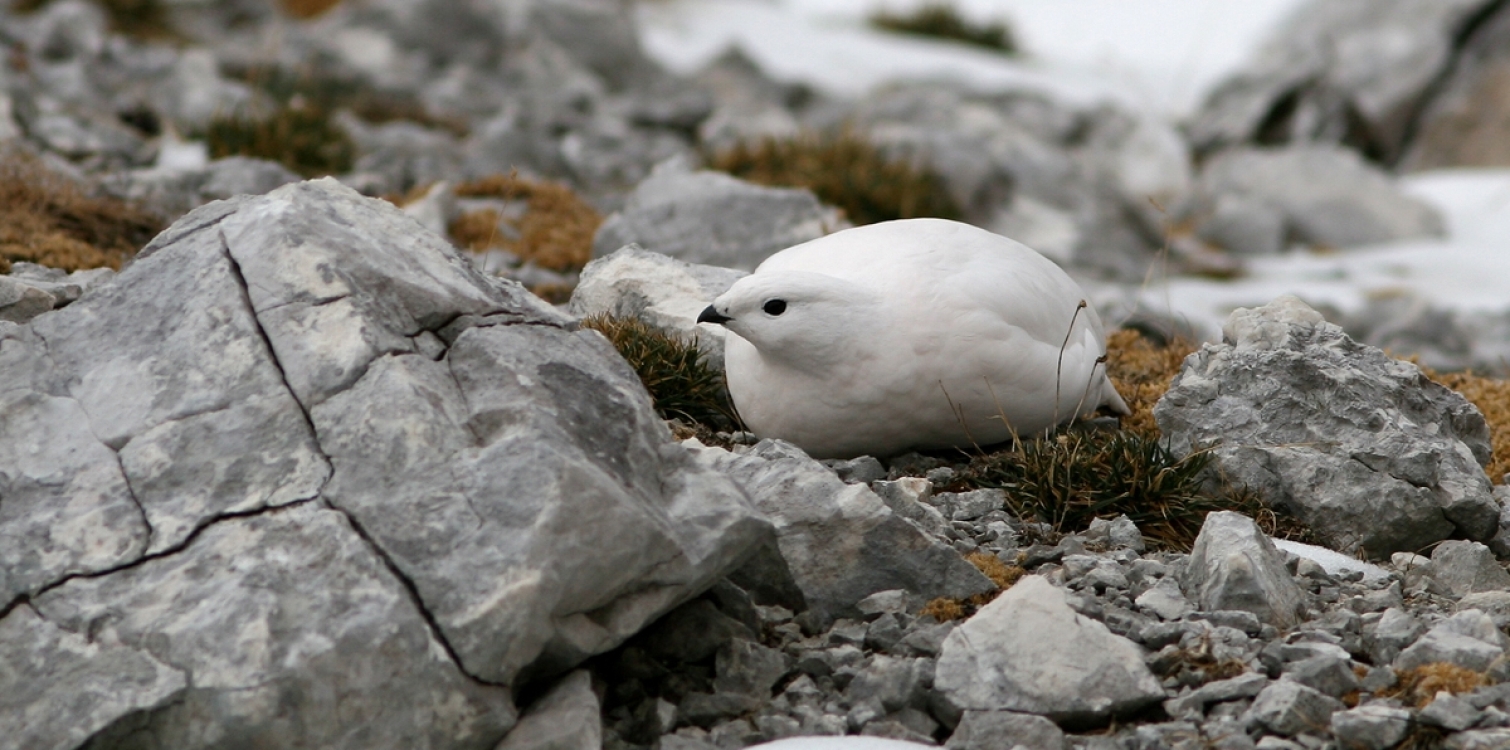
The MOUNTAIN HARE turns white in winter, but only the edge of the ear remains black throughout the year. It is one of the hardiest wild animals, surviving in temperatures as low as minus 40ºC. It lives in the heathland, but is very fearful, and any slightest noise is a threat to it from predators.
It is mostly active at night, so it is rarely seen. Its tracks are much more common in winter. In winter, its fur turns white for safety, but otherwise it is brown. In the photo above, it is in the process of changing colour.

The ROCK PTARMIGAN is a bird that lives on the ground and only flies short distances. In winter, it fully adapts to its environment, as both the male and female are white, with only the tail feathers being black. It lives above the tree line, so it can be found in higher-altitude meadows. In winter, it requires even more peace and quiet, so it will appreciate it if we choose marked paths.

The stoat, or ERMINE, is completely white in winter, except for the black tip of its tail. The lack of snow in the valleys makes it much more vulnerable than otherwise, as the protective colour is currently doing it more harm than good.
DID YOU KNOW?
- The chamois also changes color, turning from a dirty yellow-brown in summer to dark gray in winter. Its winter coat is longer than the summer one, which makes it look slim in summer but robust and stocky in winter.
Thank you.


